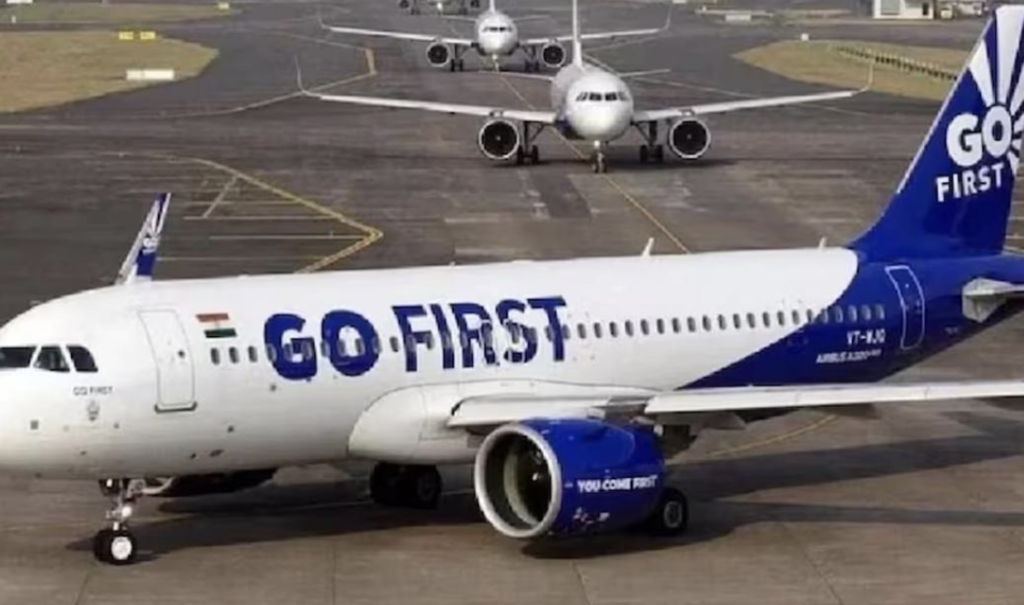
Go first fallout : Passengers may end up paying higher fares to cover up for steep rise in Indian carriers overhead costs
Introduction
We will explore the reasons behind this decision, the impact it could
have on passengers, and the possible ripple effect it could have on the Indian aviation industry
as a whole.

The rise in overhead costs for Indian carriers
The rise in overhead costs for Indian carriers is a result of several factors, including the
increasing price of fuel and the weakening of the Indian Rupee. Indian carriers have been hit
hard by the recent rise in fuel prices, which accounts for a significant portion of their
operating costs. In addition, the depreciation of the Indian Rupee has made it more expensive
for Indian carriers to purchase aircraft and other equipment, as most of these items are priced
in foreign currency. These factors have led to a rise in overhead costs for Indian carriers,
which could ultimately result in higher fares for passengers.
Go First’s decision to hike fares
Go First, one of the leading low-cost carriers in India, recently announced a decision to
increase its fares. The decision was made in response to the rise in overhead costs faced by
Indian carriers, which has put a strain on the finances of Go First. While the airline has not
disclosed the exact percentage of the fare hike, it is expected to be in the range of 5-10%. This
means that passengers who have already booked their tickets with Go First may end up
paying more than they had originally anticipated. The decision by Go First to hike fares could
also have a ripple effect on other airlines, as they may follow suit to cover their rising
overhead costs.
Impact on passengers: what to expect
The impact of Go First’s decision to hike fares is likely to be felt by passengers in the form of
increased ticket prices. Passengers who have already booked their tickets with Go First may
end up paying more than they had originally anticipated, while those who are yet to book their
tickets may find that air travel has become more expensive. This could have an impact on the
demand for air travel, as passengers may choose to explore alternative modes of
transportation or delay their travel plans.
However, it is important to note that the impact on
passengers may not be limited to Go First alone, as other airlines may also follow suit and
hike their fares to cover their rising overhead costs.
Possible ripple effect on the Indian aviation industry
Go First’s decision to hike fares could have a ripple effect on the Indian aviation industry as a
whole. Other airlines may follow suit and increase their fares as well, which could ultimately
result in air travel becoming more expensive for passengers. This could have an impact on the
demand for air travel, as passengers may choose to explore alternative modes of
transportation or delay their travel plans.
The rise in fares could also impact the profitability
of airlines, especially low-cost carriers that rely on high passenger volumes and low fares to
generate revenue. In addition, the Indian aviation industry may face increased competition
from international airlines, which may offer more competitive fares to attract passengers.
Overall, the possible ripple effect of Go First’s decision to hike fares highlights the challenges
faced by the Indian aviation industry, and the need for a long-term strategy to address these
challenges.

Government’s steps to address the situation
The Indian government has taken several steps to address the challenges faced by the aviation
industry, including the rise in overhead costs for Indian carriers. One of the measures taken by
the government is the reduction of excise duty on aviation turbine fuel (ATF) from 14% to
11%, which has provided some relief to airlines facing high fuel costs.
The government has
also introduced the Regional Connectivity Scheme (RCS), which aims to connect smaller
towns and cities in India with air travel, and has provided financial incentives to airlines
operating under the scheme. This has helped to boost the growth of regional air travel in India
and has provided a much-needed boost to the aviation industry.
The government has also taken steps to improve airport infrastructure and has announced plans to build new airports in underserved regions. These measures are expected to improve the overall efficiency of the aviation industry and reduce the cost of operations for airlines, which could help to mitigate
the impact of rising overhead costs on passengers.
In conclusion, the rise in overhead costs for Indian carriers, caused by the increasing fuel
prices and weakening of the Indian Rupee, has put a significant strain on the finances of
Indian airlines.








